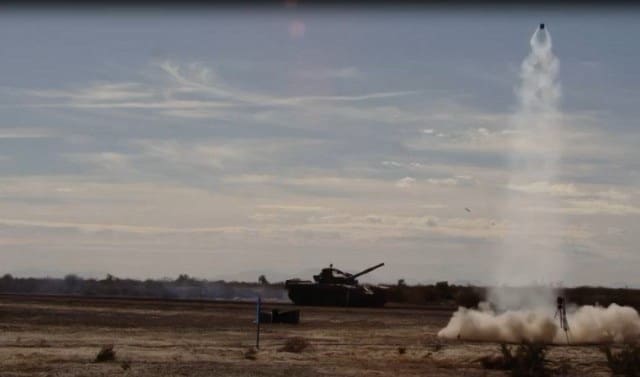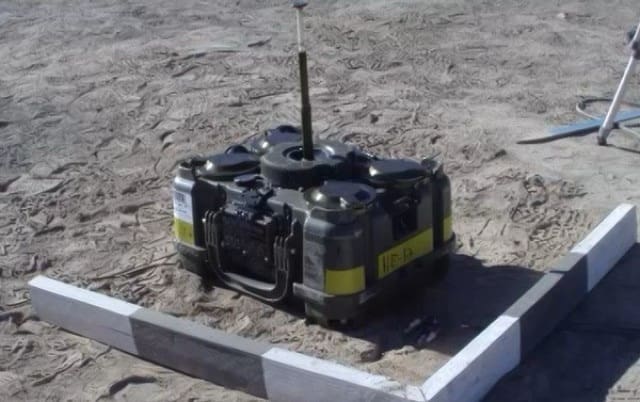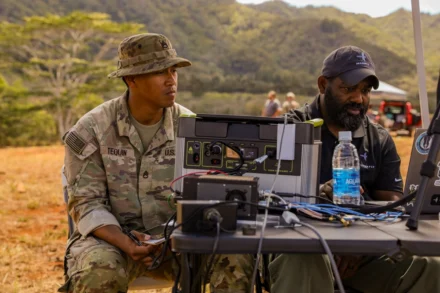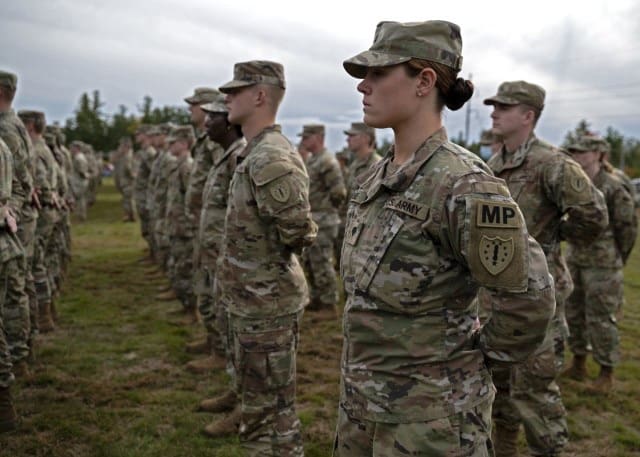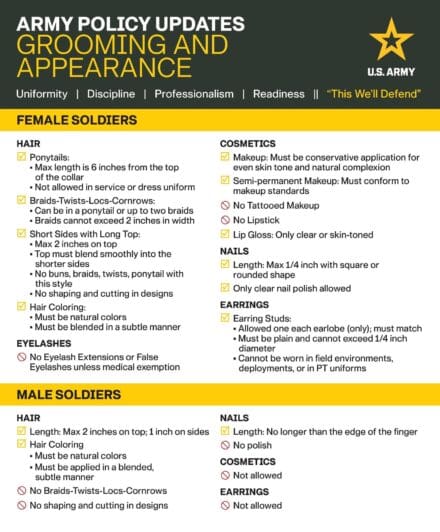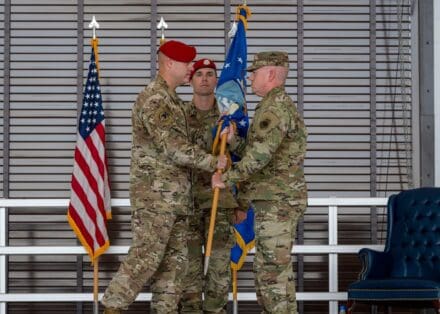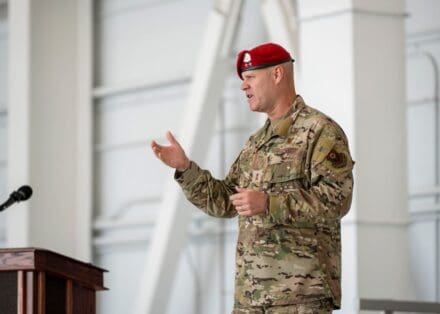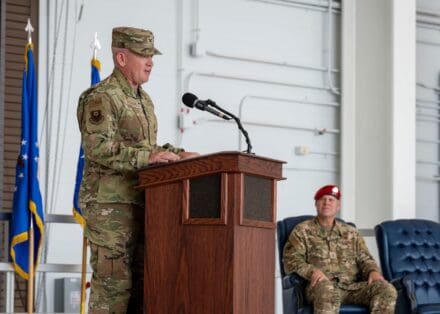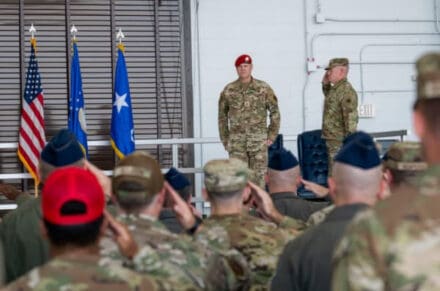RAYMOND REES NATIONAL GUARD TRAINING CENTER, Ore. – The Oregon Army National Guard is transforming its unmanned aircraft systems training at the 249th Regional Training Institute, introducing advanced platforms while developing innovative solutions to meet evolving battlefield requirements.
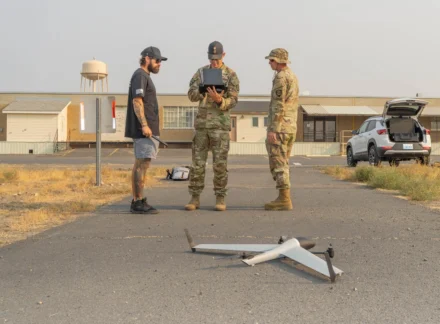
During September 2025, the Regional Training Institute at Rees Training Center hosted two distinct training events that showcase Oregon’s expanding role as the state’s center for drone operations. A specialized Master small Unmanned Aircraft Systems pilot course focused on the Flightwave Edge 130 system from Sept. 3-5, followed by the broader Small Unmanned Aircraft Systems course running Sept. 3-12.
The training represents a significant evolution from the RQ-11B Raven systems that were divested in March 2024. Students now learn on the RQ-28A Sky Ranger, officially designated by the Army for Short Range Reconnaissance missions, along with the more advanced Edge 130 platform.
“The course itself is 10 days, but with optimal weather conditions and smaller class sizes, we could potentially complete the comprehensive training in about five days,” said Staff Sgt. First Class Mannen, the course manager. “That includes all the classroom instruction and flight operations, which allows me to give students more hands-on flight time.”
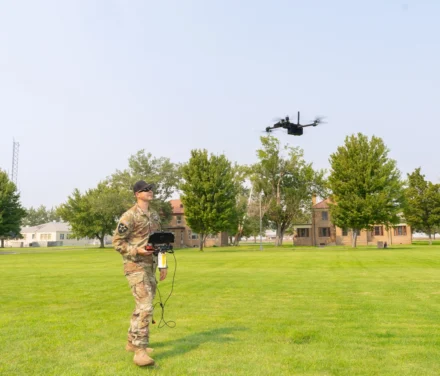
The Edge 130, manufactured by Red Cat Holdings’ Flightwave division, represents a significant upgrade in capabilities. The aircraft features vertical takeoff and landing with transition to fixed-wing flight, providing 60 minutes of flight time in vertical mode and 90 minutes in fixed-wing configuration.
“The edge 130 has three different payloads on it right now,” explained Peter DeJoseph, a Flight Trainer Three with Red Cat Holdings. “You have the gimbal 360 payload that can gimbal 360 around, has 10 times zoom, and has electro-optical infrared functionality on it. And then the other payload is the mapping array where you can set a survey of an area.”
The training methodology has also evolved. Red Cat’s approach includes a Learning Management System that students access two weeks before arrival, allowing them to complete theoretical modules at their own pace.
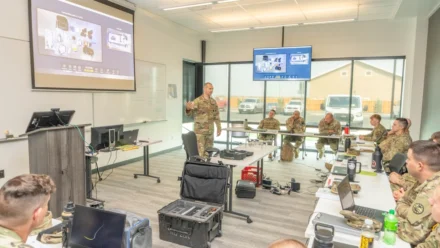
“They get two weeks and go through each module and learn,” DeJoseph said. “When they get through a module, they can take a 15-minute practice, take out that part of the system, build up the aircraft, go through the ground control station, build missions, download maps, and be all hands on with that learning module system.”
Perhaps the most innovative aspect of Oregon’s UAS program is the development of custom-built aircraft designed to supplement expensive commercial systems. Lt. Col. Mark Timmons, RTI commander, initiated this effort after recognizing the financial constraints of relying solely on $45,000 commercial platforms.
“These systems cost $45,000 apiece, so talking with Sgt. 1st Class Mannen, here do we go once we get them here and we want to loan these out to various UAS operators? Well, what’s going to happen? We know what’s going to happen. They’re going to crash,” Timmons explained.
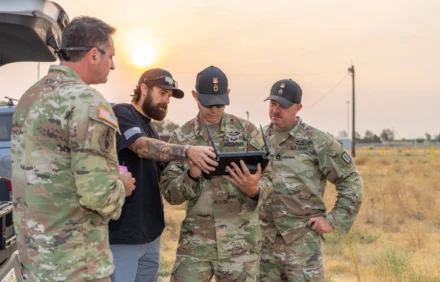
Working with Echo MAV, a company that specializes in NDAA-compliant components, Oregon has developed prototypes that cost between $2,000-$5,000 including ground control stations. The initiative draws inspiration from similar programs at the 101st Airborne Division and 25th Infantry Division.
“The opportunity for us to be able to essentially design and build by 3D printing our own aircraft, partnering with a company who are experts in the technology piece of it and the compliance piece of it, putting those two efforts together gives us an Oregon-made, essentially US-made system,” Timmons said.
Oregon’s UAS training builds on infrastructure established through partnerships with the U.S. Navy. The state operates the Unmanned Aerial System Operating Facility in Boardman, a $13 million, 12,400-square-foot facility that opened in April 2023. While the RQ-7B Shadow Tactical UAS no longer operates from that facility, it established Oregon as a significant player in unmanned systems training.
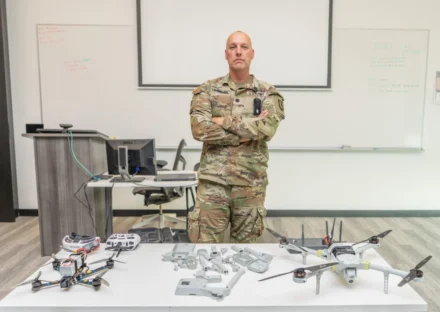
Rees Training Center now serves as the primary hub for Oregon Army National Guard drone operations, with capabilities extending beyond basic flight training to include intelligence, surveillance, and reconnaissance applications, mapping surveys, and potential support for environmental monitoring missions.
The versatility of the new systems opens possibilities for diverse mission support. Plans include using the Edge 130’s mapping capabilities to conduct environmental surveys of the Rees Training impact area to locate burrowing owl habitats for the Oregon National Guard’s environmental office.
“With the edge 130 we could task the platoon to do a map survey with the mapping payload and we can get a high fidelity aerial photography of that impact area for environmental, which is super cool,” Timmons noted. The training also addresses modern operational challenges, including electronic warfare considerations and fiber optic drone flight capabilities, preparing soldiers for the evolving nature of unmanned operations in contested environments.
As the Oregon Army National Guard continues developing its UAS capabilities, Rees Training Center positions itself as not just a training facility, but as an innovation hub where soldiers learn to operate, maintain, and even build the unmanned systems that increasingly define modern military operations.
The September training courses represent another step in Oregon’s journey from traditional UAS operations to a comprehensive program that combines commercial systems, custom-built platforms, and innovative training methodologies to prepare soldiers for the future of unmanned warfare.
Story by MaJ Wayne Clyne
Oregon National Guard Public Affairs Office


